本文由 申都设计 授权mooool发表,欢迎转发,禁止以mooool编辑版本转载。
Thanks CMAD Architects for authorizing the publication of the project on mooool, Text description provided by CMAD Architects.
申都设计:坪山区日新小学位于深圳市坪山区坪山街道,占地1.7万平方米,建筑面积4.9万平方米。校园整体简洁的外表和秩序的空间为城中村环境注入了新的活力。活泼,轻快的形象下,秩序的教学空间之外,以环形秩序串联一系列活力空间,为当地的学生建立一座边学习边成长的乐园式学校。
CMAD Architects:Pingshan Rixin Primary School is located in Pingshan Street, Pingshan District, Shenzhen, covering a floor area of 17,000 square meters and a building area of 49,000 square meters. The concise appearance and ordered space of the campus have invigorated the village in the downtown. With the lively settings mingled in the well-structured space for education, a series of dynamic areas are connected in a loop order, providing local students with a paradise-like school for their learning and growth.
▼校园与周边城市 Campus and the surrounding city texture
▼校园鸟瞰 Aerial view
设计初衷 DESIGN INTENTION
基于校园非正式空间的再思考,寻找一个能够耦合学生成长与学习的建筑形式语言是本次实践的设计初衷。当下的校园建筑功能形态与学生的生活高度相关,随着教育改革对校园空间提出更高的要求,合理组织正式与非正式空间的建筑形式变得至关重要。
With reflection on the informal space of campus, the design intends to find an architectural language that can enable the linkage between students’ growth and learning. Currently, the functional forms of campus buildings are highly related to students’ lives, making it even more crucial to deliver reasonable arrangement of architectural forms for formal and informal spaces in order to meet the higher requirements of education reform on campus space.
▼区位图 Site map
▼校园轴测图 Axonometric Drawing
环境与场地 CONTEXT AND SITE
每座校园都是一座小城市。这所位于高密度城市住宅区的校园在设计初始即要求建筑师做出一系列的设计决策应对场地环境,不仅要考虑红线内各建筑体量之间的相互关系,并且策略性得处理校园与其所在城市街区的关系。基于对空间的活力时空的观察与思考,通过对空间的充分利用,创造出全时段,多层次的学习与生活交织的空间场所。
Each campus resembles a small city. At the initial stage of design, the architects were asked to make design-related decisions based on the site environment in a dense urban residential area, not only considering the relationship among the buildings within the planned area, but also strategically managing that between the campus and the city block where the school is located. On the basis of the observation and reflection on the changing vitality at different time in the same area, a full-time multi-layered design for study and life is finally crafted upon the full utilization of spaces here.
▼主入口 Main entrance
▼学校西北角街景 Street View on the northwest corner of the school
设计构思——“环形秩序” DESIGN CONCEPT : LOOP ORDER
环形空间串联,阶,院,桥,层多重形态组合成乐园式的校园非正式场所。“活力环”创造一种学习与生活相互有机融合的环境,给校园文化添加更深刻、更温馨、更人性化的内涵。孩子们日常生活中诸如读书、思考、奔跑、打闹、争吵、幻想等各类行为,都能够诉诸于开放、复合、多义化的空间体验。
All spaces in a loop order are connected one after another, with steps, yards, bridges, and layers combined into a paradise-like informal campus. “Vitality loop” creates an environment in which study and life are organically integrated, adding a touch of profound, considerate and humane color to the campus culture. Children’s daily behaviors such as reading, thinking, running, playing, quarreling, daydreaming, etc. can be carried out in the open, compound, and multi-functional space.
▼生成分析 Building analysis
院:内化秩序 YARD :INTERNAILIZED ORDER
“院”半围合的教学空间,营造出高效、集约的书院气息。
The semi-enclosed education space of “yard” creates an efficient and intensive atmosphere of academy.
▼院落空间 Courtyard spaces
▼中心庭院小剧场 Small theater in the central courtyard
课间活动与教学空间的联系与过渡,内向的庭院为了让建筑的尺度更加亲切舒适,从而让孩子们更容易自发地代入空间体验,除了两个安静的内院之外也加入了大量的室外平台、廊道以及桥等元素。孩子们的日常穿行可以远离不良气候的影响,一些超出孩子们身心尺度的建筑体量也在潜移默化中得到消解。
As the connection and transition between class activities and educational space, introverted yards deliver a more intimate and comfortable experience inside the architecture, making it easier for children to spontaneously feel the space. In addition to the two quiet inner yards, many outdoor platforms, corridors, bridges, and other elements are also added, thus to keep children away from the bad weather when they’re outside the classroom in the campus. These designs can also subtly neutralize the impact of some buildings with the size far beyond children’s physical and mental capability.
▼北侧庭院与漂浮的“盒子”Northern courtyard with floating “box”
▼北侧庭院和连廊 Northern courtyard and corridor
▼三层活动平台 Platform on 3rd Floor
桥:线性焦点 BRIDGE: LINEAR SPACE AS FOCUS POINT
“桥”空中连廊联系不同组团的线性空间。当孩子在不同教学楼之间移动的时候,会得到一种身心上的愉悦感。而当孩子从高处向下看的时候,这种愉悦感将会得到进一步的增强,同时也成为校园空间中的视线焦点。
“Bridges”, or aerial corridors, are a kind of linear space connecting different groups of architectures, which will give children a sense of physical and mental pleasure when moving between different buildings. This emotion of delight would be further enhanced when children look down from the height, as the “bridges” will become the focal point in the campus space.
▼四层连桥 Bridge of 4th floor
▼教学楼之间的风雨连廊 Wind and rain corridor between the teaching buildings
层:集约与漂浮 LAYER : INTENSIVE AND FLOATING IN VERTICAL SCOPE
“运动层”向下聚合多种丰富有趣的底层娱乐空间;向上衔接漂浮的班级教学秩序。架空运动空间形成立体复合的运动层,抬升至一层高的操场与教学楼裙房延伸相接。垂直维度的有机联系创造让孩子“底层成长,上层学习”的空间秩序。
The “sports layer” aggregates a wide range of diversified and interesting entertainment spaces downward, and connects the floating teaching spaces upward. The overhead sports space forms a three-dimensional composite sports layer, and the playground raised to the height of one floor relates to the annex of educational building. The organic connection of the vertical dimension creates a strict spatial order where children can “grow at the bottom layer and study at the upper layer”.
▼功能分区 Functions
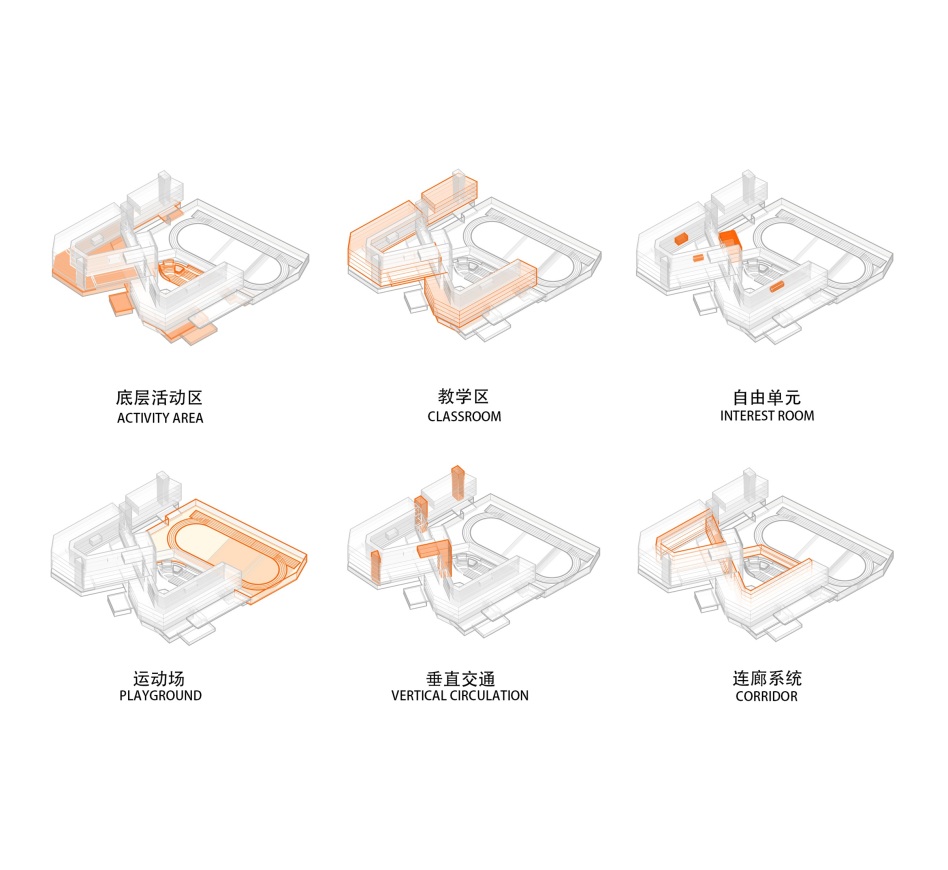 ▼底层活动空间 Activity space at the bottom
▼底层活动空间 Activity space at the bottom
▼负一层的风雨操场 Indoor Playground of B1
考虑到日后城市肌理东高西低的天际线,我们将田径场靠东布置,将主要建筑体量沿西侧布置,这不仅能减少东侧高层建筑对场地的压迫和局促感,并且操场将获得更多阴影从而更加舒适。位于场地的东北侧的操场下方灰空间则成为家长接送等待区,最大成度的内化和缓解学校为周边道路带来的潜在交通压力。
Considering the future skyline of Shenzhen being high in the east and low in the west, we have arranged the track-and-field ground to the east and the main buildings to the west, which not only mitigates the sense of oppression to the venue from the high-rise buildings on the east side, but also makes the playground comfortable with more shadows. The gray space below the playground on the northeast side of the venue functions as the waiting area for parents to pick up their children, which maximizes the internalization and relieves the potential traffic pressure to the surrounding roads as well.
▼从二层操场望向连桥Look from the 2nd floor playground to the bridge
阶:成长行为发生器 STEPS : CHILDHOODS‘ BEHAVIOR GENERATOR
“阶”趣味自由的非正式场所,释放童年的可能性。发掘儿童时期潜力的重要性已经被各种研究甚至诺贝尔奖获得者所认同。在校园空间中设置小剧场,在激发学生的兴趣同时也成为具有仪式感的校园记忆场所。阶,应对垂直高差而生的过渡空间将承载成长的多种可能性。具有仪式感的剧场的校园意向同时也成为学校的精神空间。促进学生的多种行为的发生的同时,也成为学生,家长和老师共同回忆的空间载体。
“Steps” are an informal place for fun and free activities, unleashing the possibility of childhood. The importance of exploring the potential of childhood has been recognized by different studies and even Nobel Prize winners. Setting up a small theater in the campus space not only stimulates students’ interest, but also becomes a part of ceremonial campus memory. Steps, a transition space born to deal with the vertical height difference, will deliver a variety of possibilities for growth, while the ceremonial architecture of theater may become the spiritual cradle for the school, which will not only promote the occurrence of students’ various behaviors, but also become a carrier of shared memories for students, parents, and teachers.
▼次入口台阶Steps of the second entrance
▼次入口二层平台 Second-floor platform of the second entrance
▼图书馆Library
窗 :自清洁的建筑表皮 WINDOW : SELF-CLEANING FACADE
“窗”作为联系室内与室外空间的媒介,采光,通风之外,窗户影响着建筑表皮肌理。功能上,巧妙得平衡了阳光,空气和雨水。倾斜的金属板在雨水的冲刷下,时刻保持着整洁。形式上,简洁立面语言增强了校园印象的整体性和秩序感。
“Windows” are a medium to connect indoor and outdoor spaces, which can affect the facade of buildings apart from lighting and ventilation. Functionally, it skillfully balances sunlight, air, and rain. The inclined metal plates are always clean due to the flushing of rain. Formally, the concise facade enhances the sense of integrity and order of the campus.
▼沿街立面 Façade along the street
▼西侧外立面 Western façade
▼风雨连廊采用了半透明聚碳酸酯板 The indoor bridge features translucent polycarbonate plates
▼外立面细部 Details of façade
结语 CONCLUSION
学校不仅是教育的承载空间,更是学生童年的记忆空间。坪山区日新小学正是带着这样的初衷,构建的不仅是形式上的环更是孩子记忆中的环。我们希望学生在环形秩序下的校园空间里发现,收获;无论过去,现在与未来。
School is not only the carrier for education, but also for the memory of childhood. It is with this original intention that we are not only building the structure of loops in Pingshan Rixin Primary School, but also the anchor of loops in children’s memory. We hope that children can always enjoy their discoveries and gains from the campus space in such a loop order, no matter in the past, at present or in the future.
项目名称:深圳坪山区日新小学
完成年份: 2021.9
项目面积:49000平方米
项目地点:深圳坪山区坪山街道
建筑设计:申都设计集团有限公司深圳分公司
公司网址:www.cmadgroup.com
联系邮箱: pr@cmadgroup.com
主持设计师:邹修洪
主创设计师: 陈卓
设计团队: 陈庆,张亚文、陈国栋、陈国均、白荣刚、许文彪、嵇晓宇
客户:坪山区建筑工务署
代建:深圳市万科城市建设管理有限公司
景观:深圳派尔景观规划设计咨询有限公司
室内:深圳市九度空间室内设计有限公司
摄影: 张超&罗灿辉
Project Name: Shenzhen Pingshan Rixin Primary School
Year completed: 2021.9
Project area: 49,000 square meters
Location: Pingshan Street, Pingshan District, Shenzhen
Architectural Design: CMAD Architects
Company website::www.cmadgroup.com
Contact email: pr@cmadgroup.com
Host designer: Zou Xiuhong
Lead designer: Chen Zhuo
Design team: Chen Qing, Zhang Yawen, Chen Guodong, Chen Guojun, Bai Ronggang, Xu Wenbiao, Ji Xiaoyu
Client: Pingshan District Construction and Public Works Department
Agent construction: Shenzhen Vanke Urban Construction Management Co., LTD
Landscape: Shenzhen Pyer Landscape Planning and Design Consulting Co., LTD
Interior: Shenzhen NINE DO Interior Design Co., LTD
Photography is by Zhang Chao & Luo Canhui
“ 简单整齐、充满活力的教学空间, 激发了学生的劳逸结合。 ”
审稿编辑 :Ashley Jen
更多 Read more about: CMAD Architects申都设计


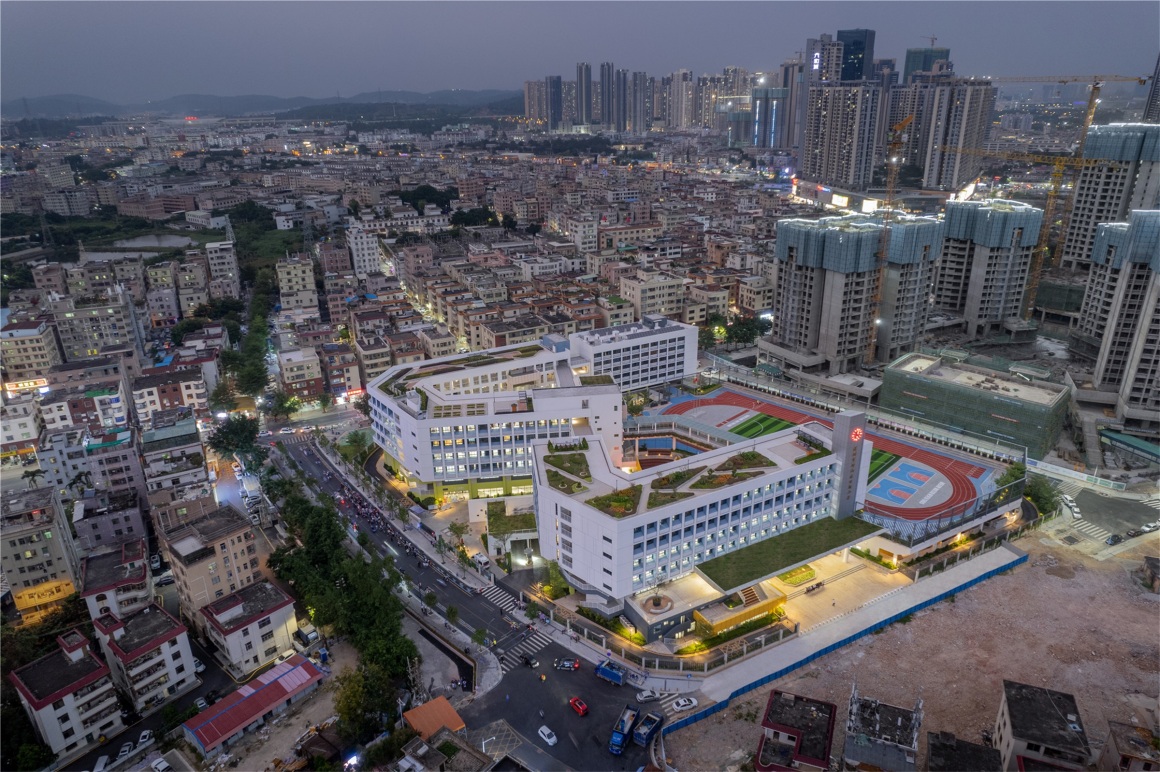
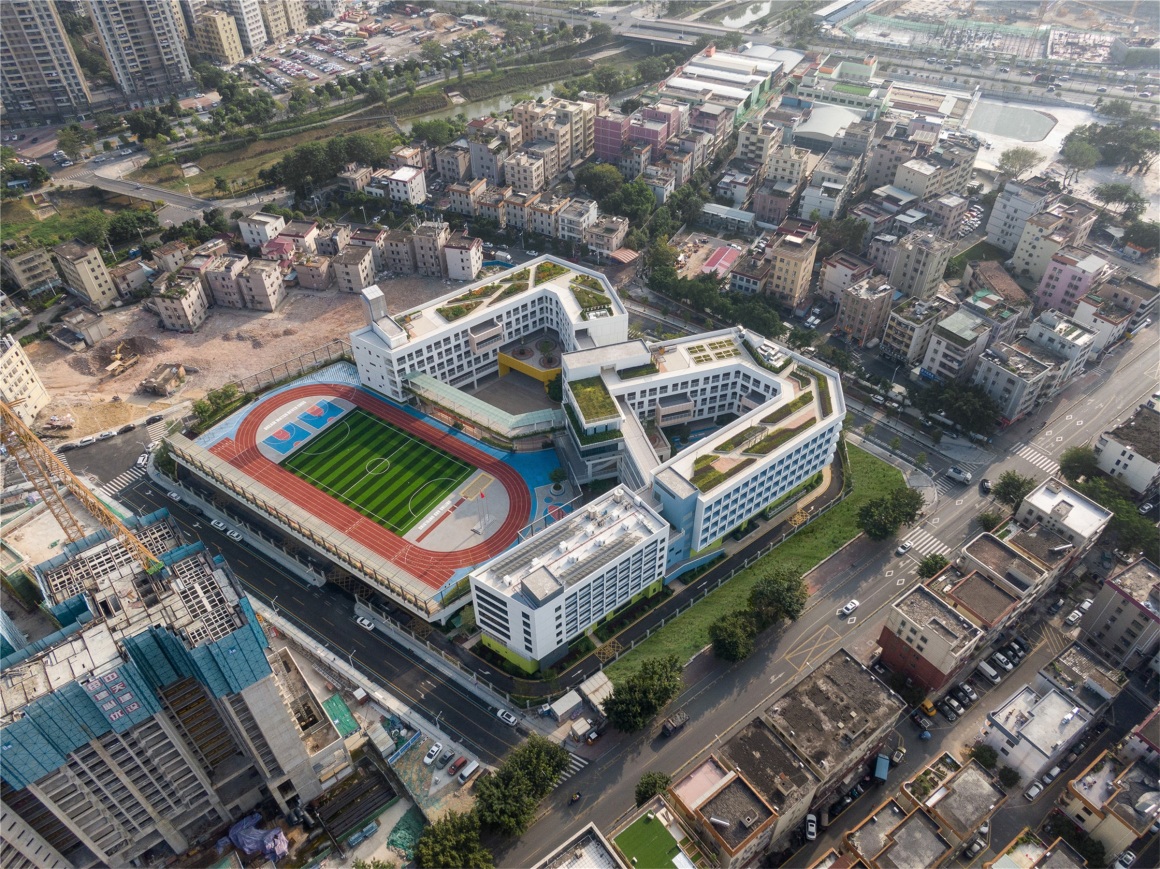
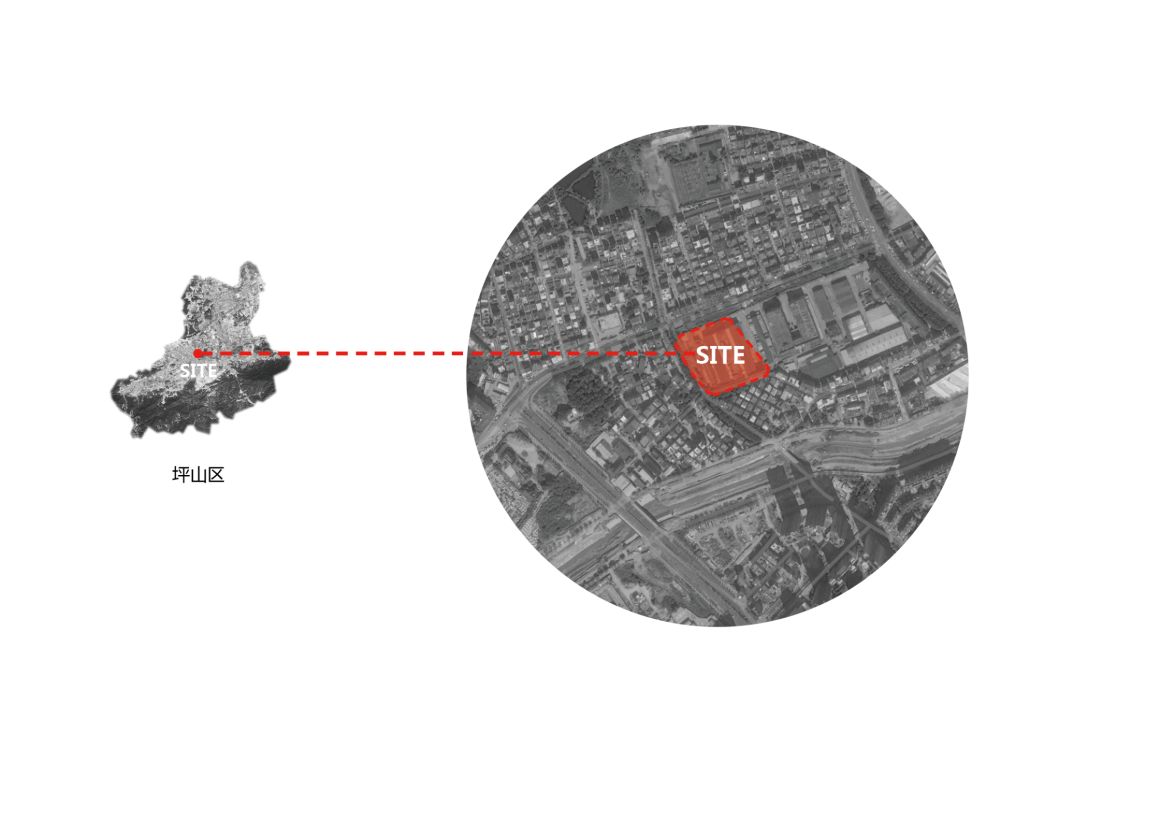
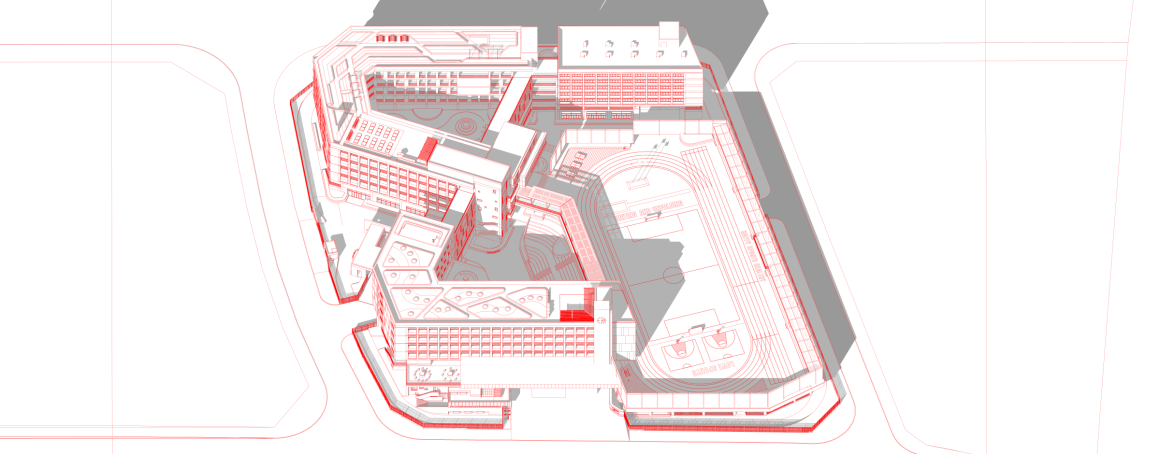

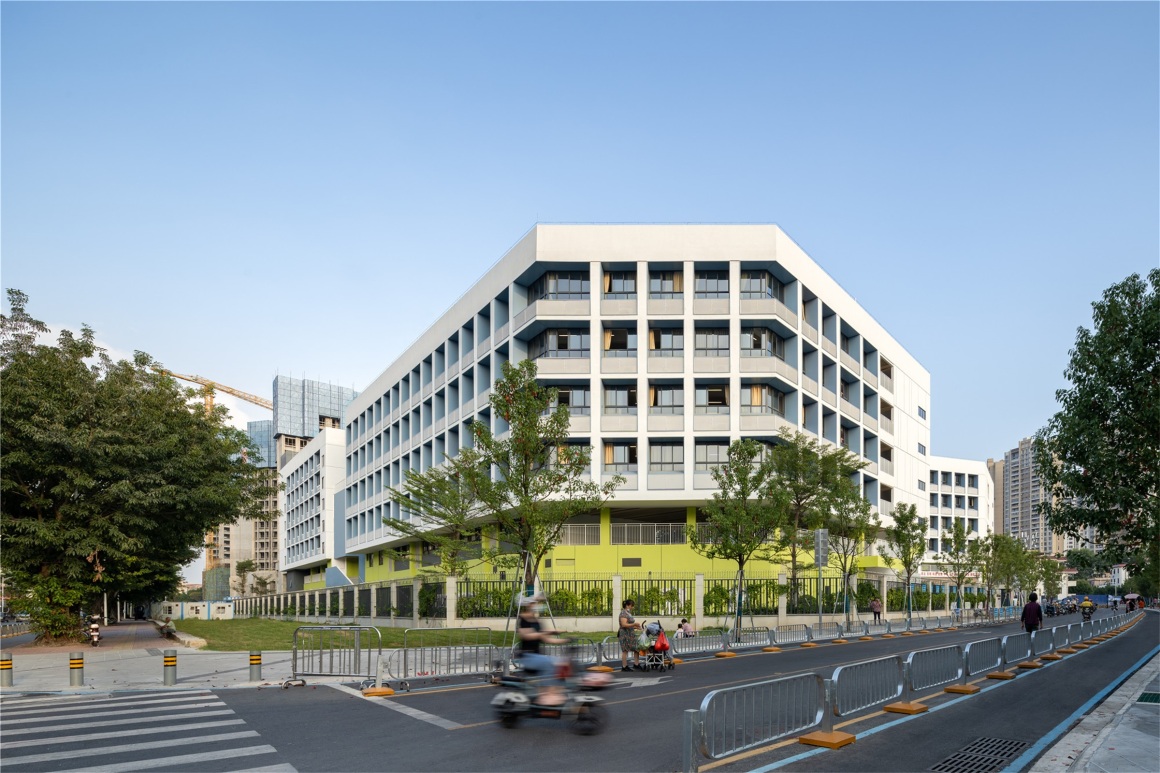
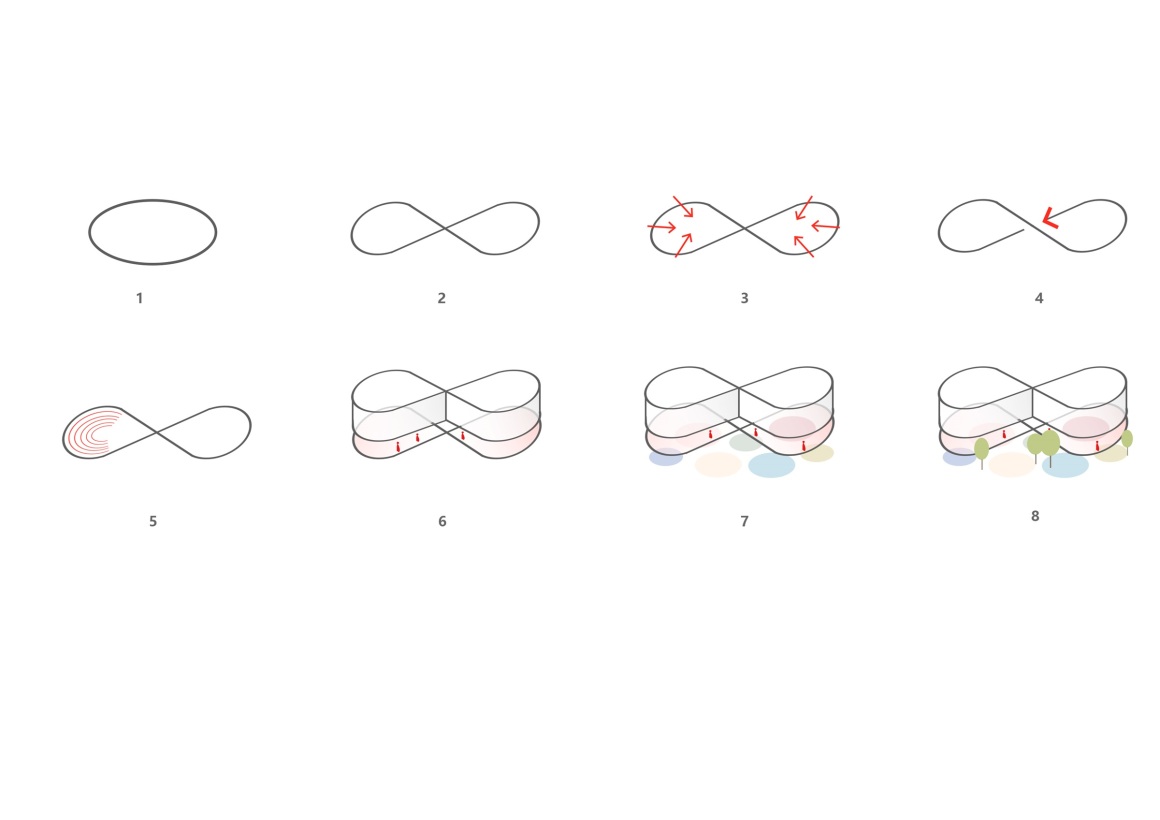
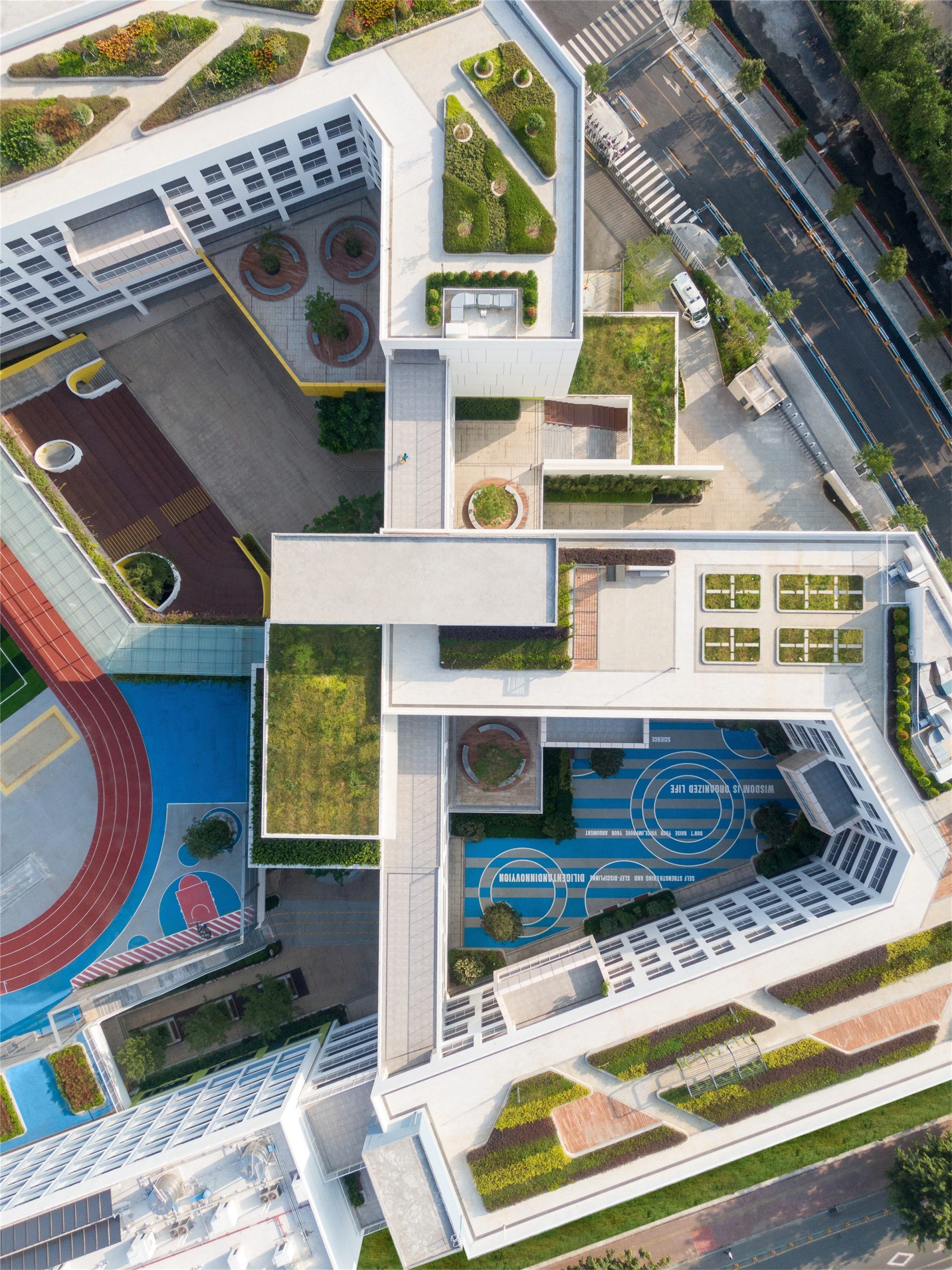



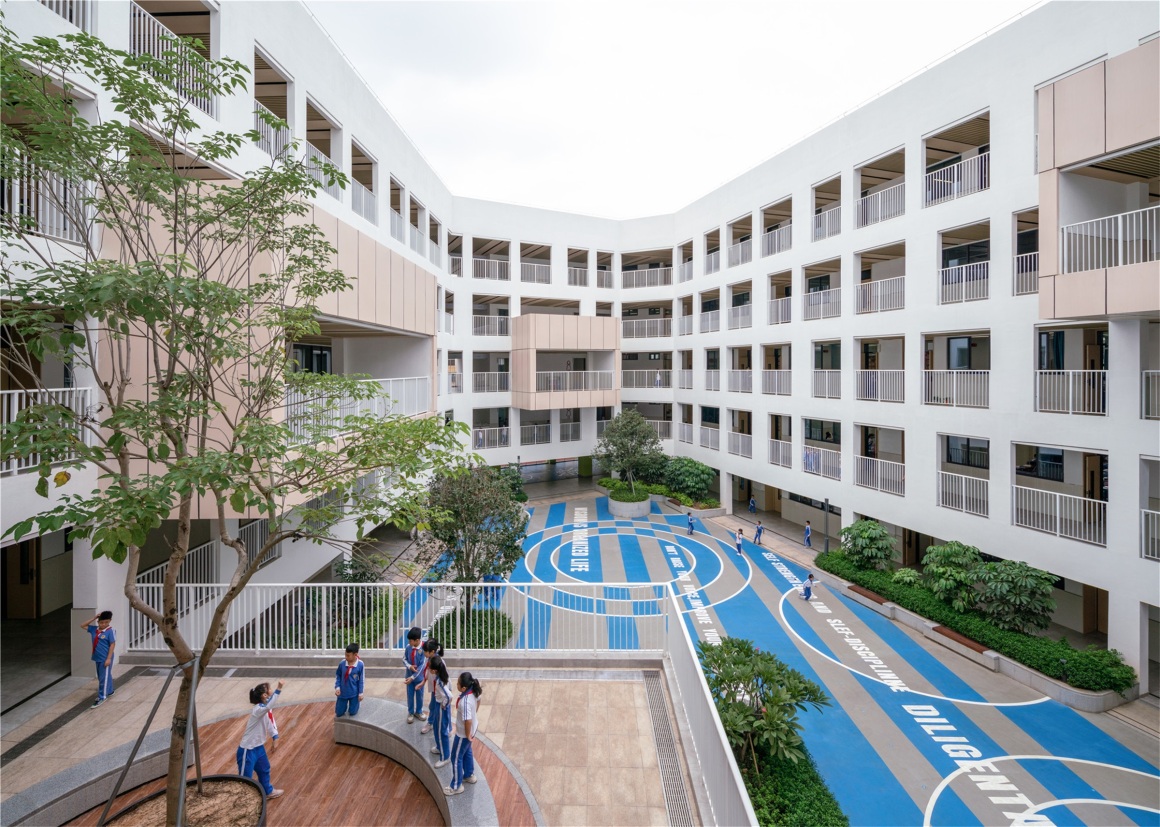

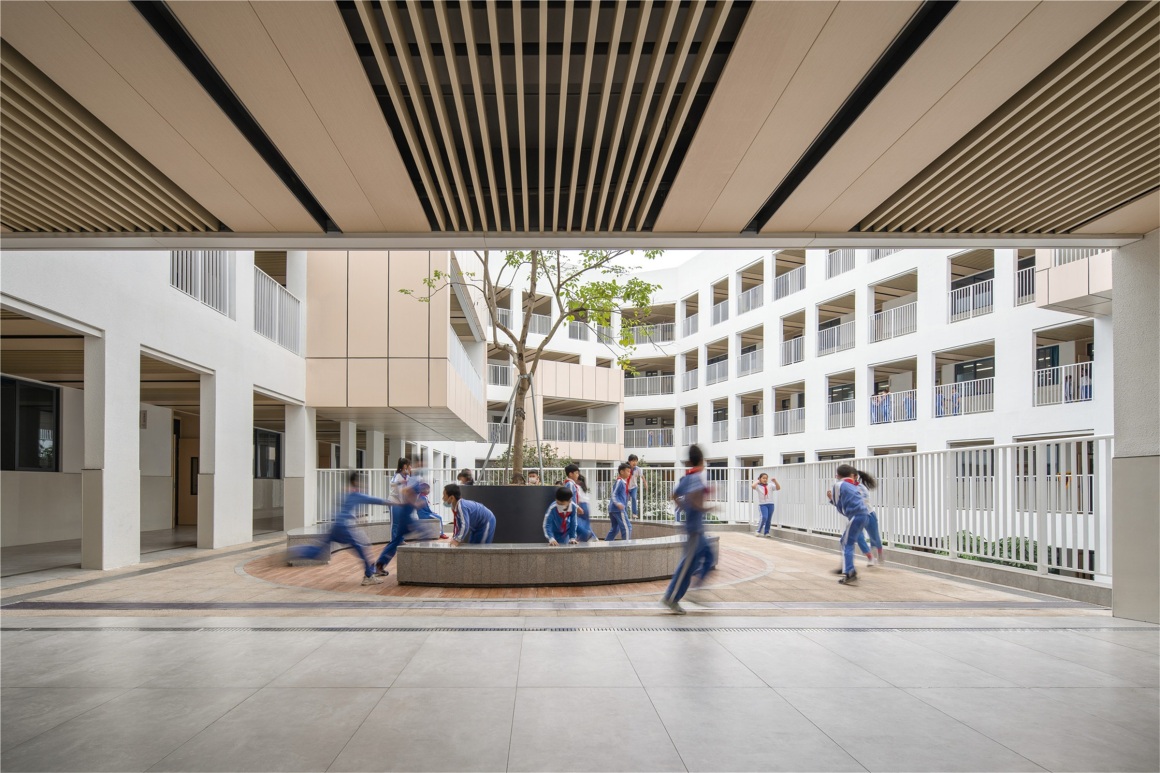
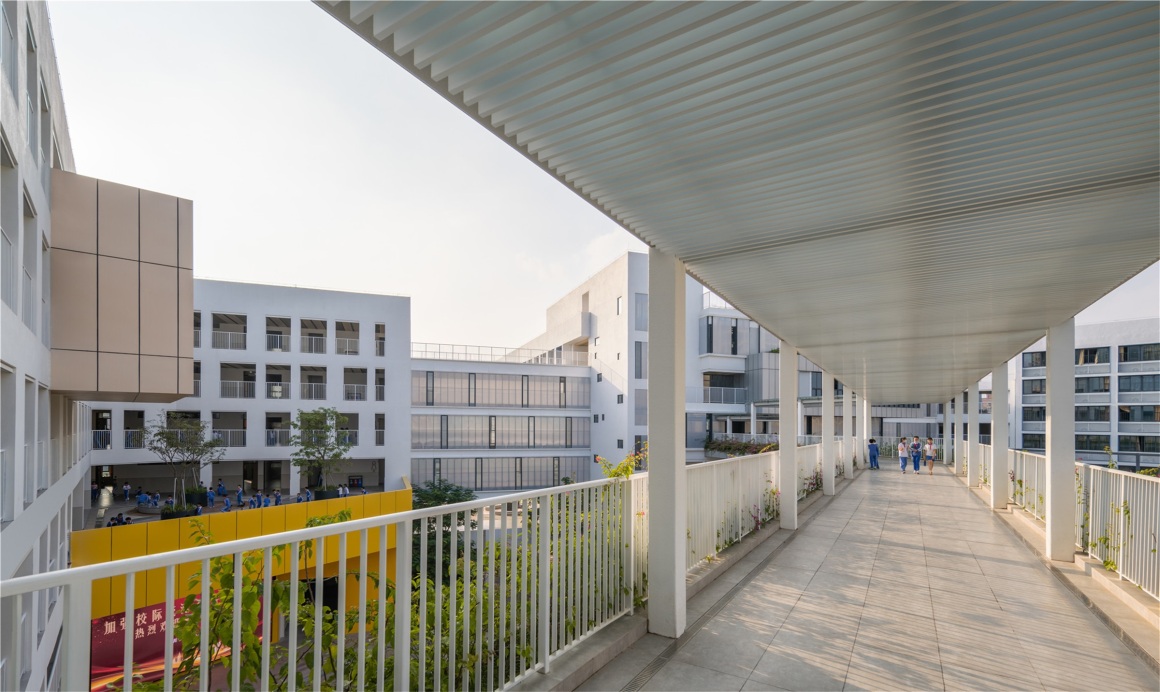



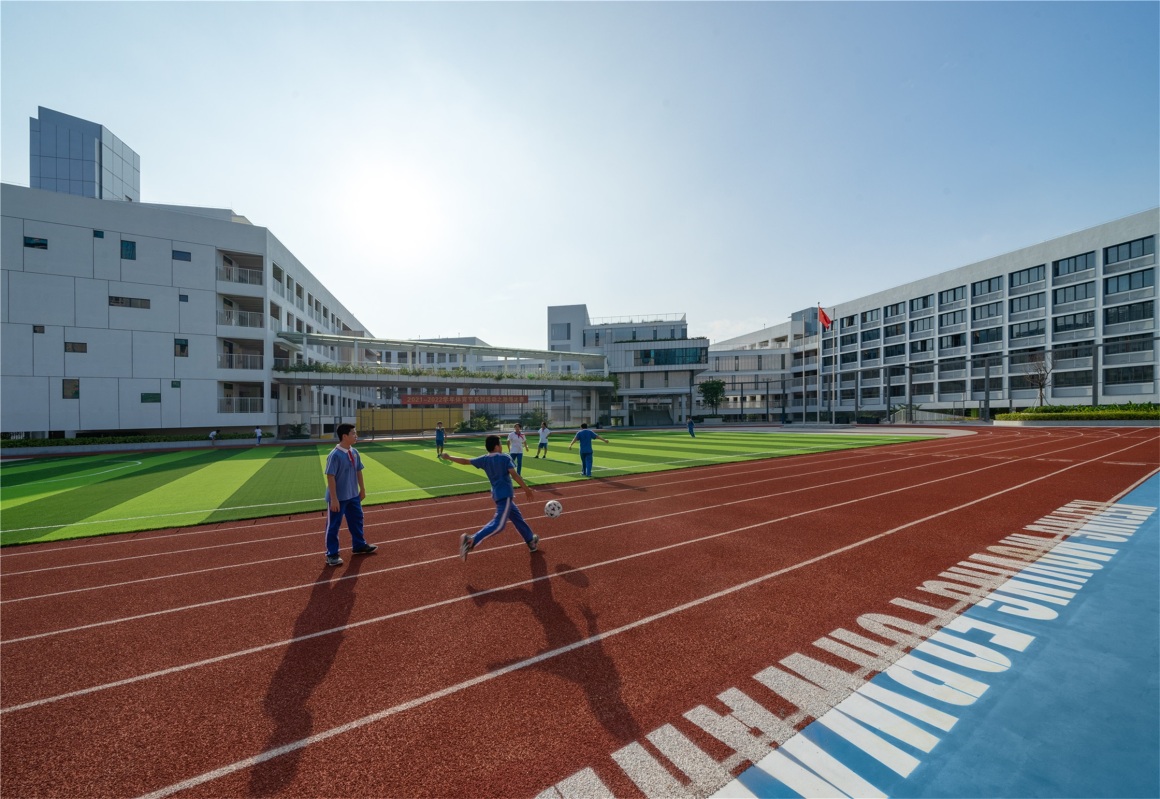

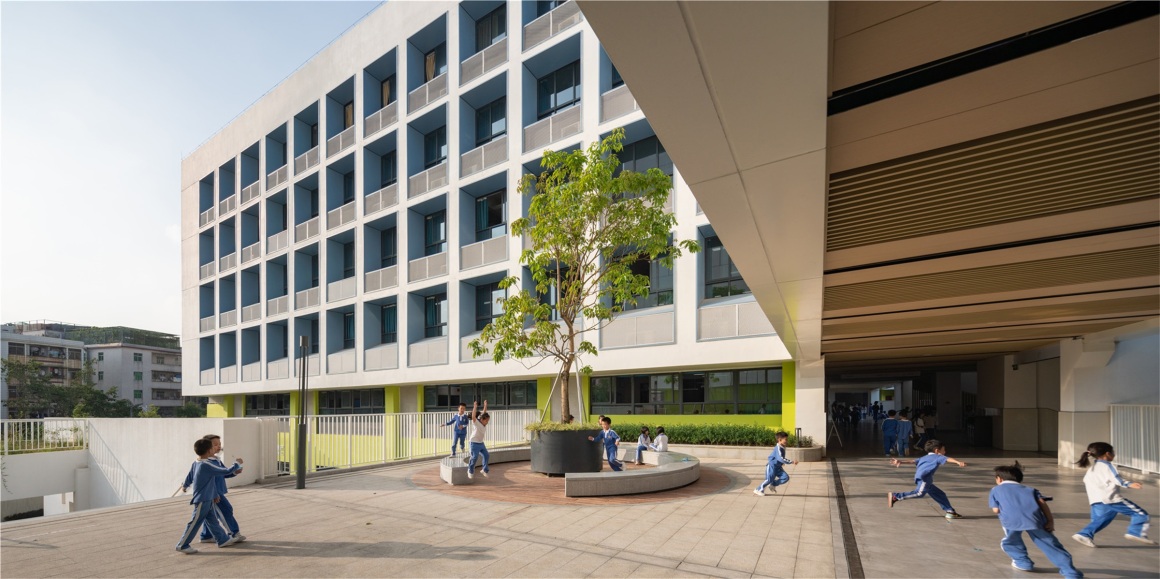
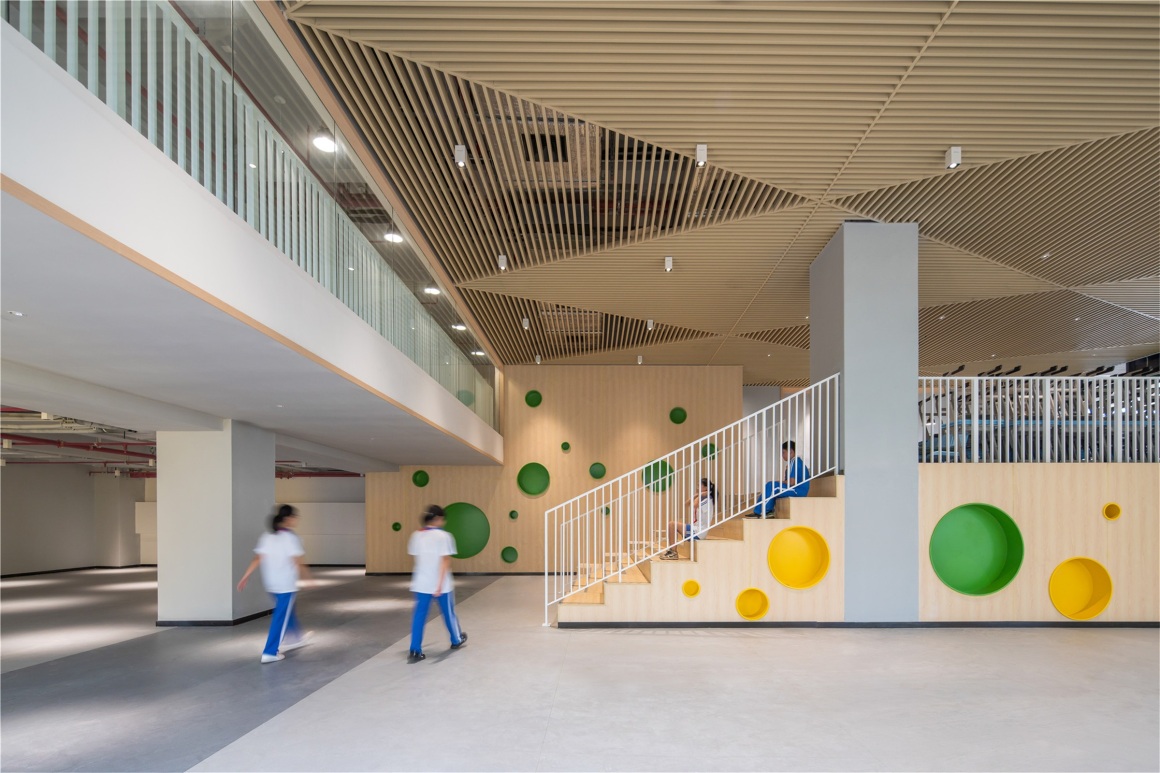
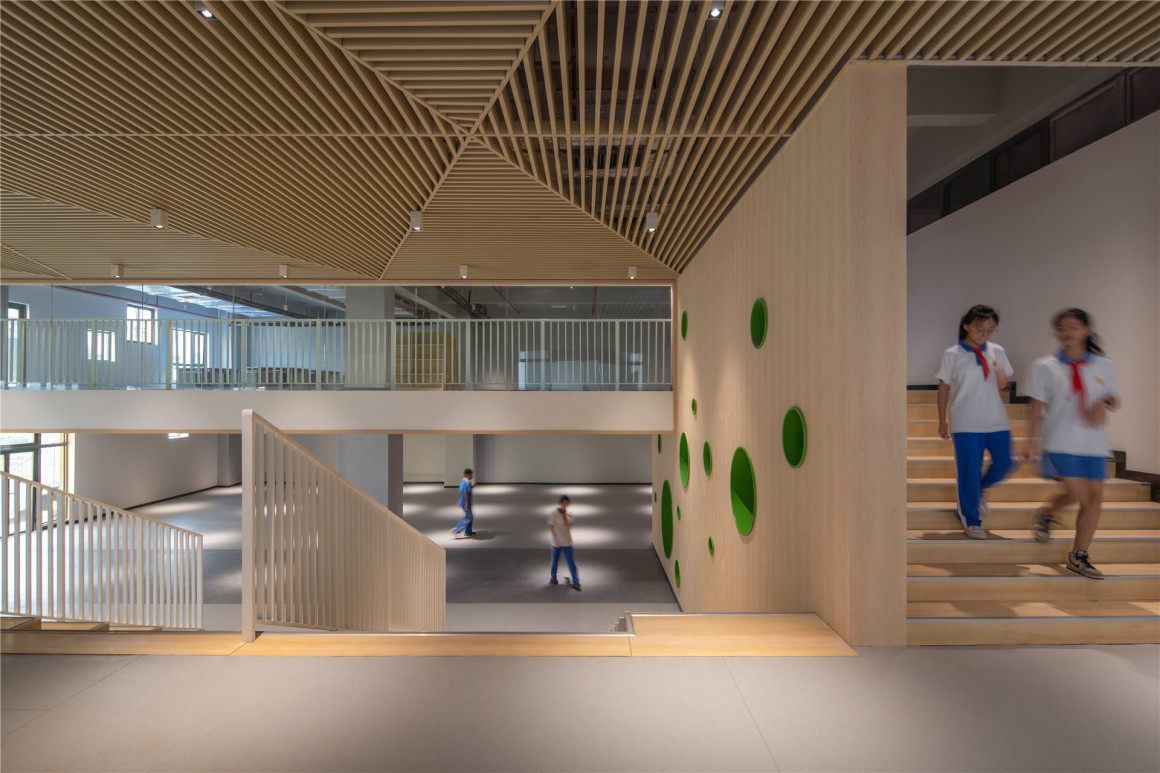

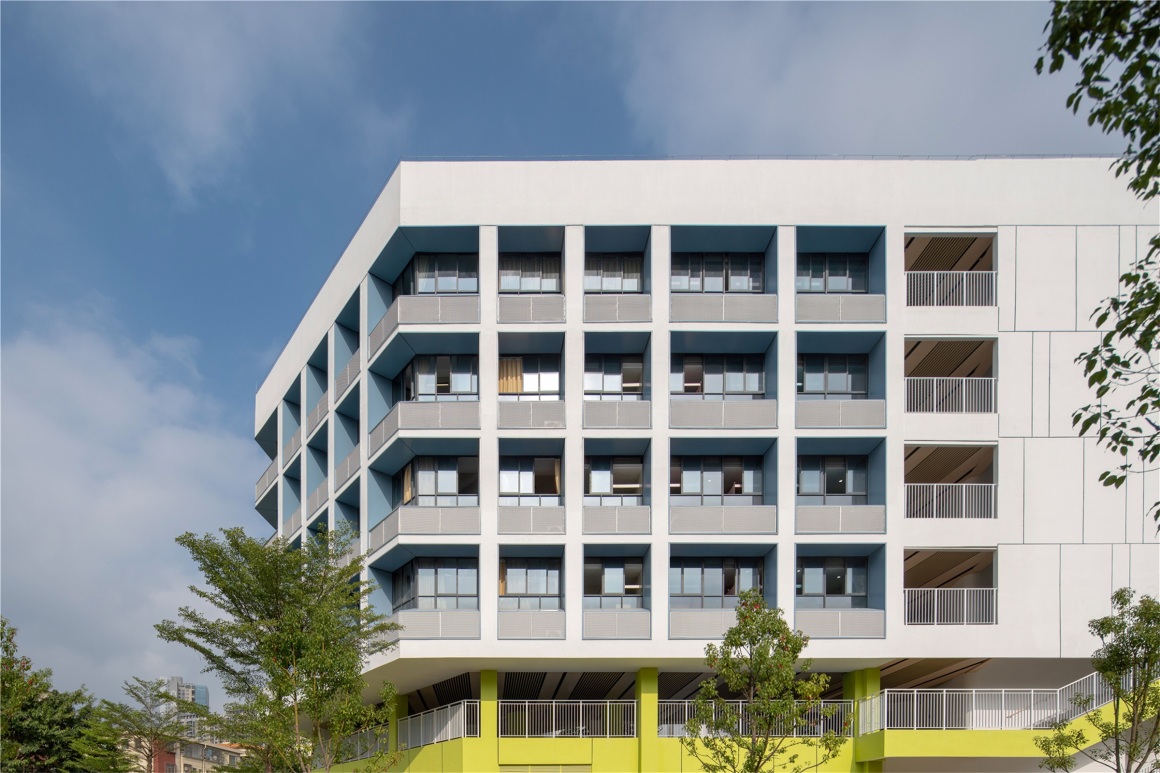
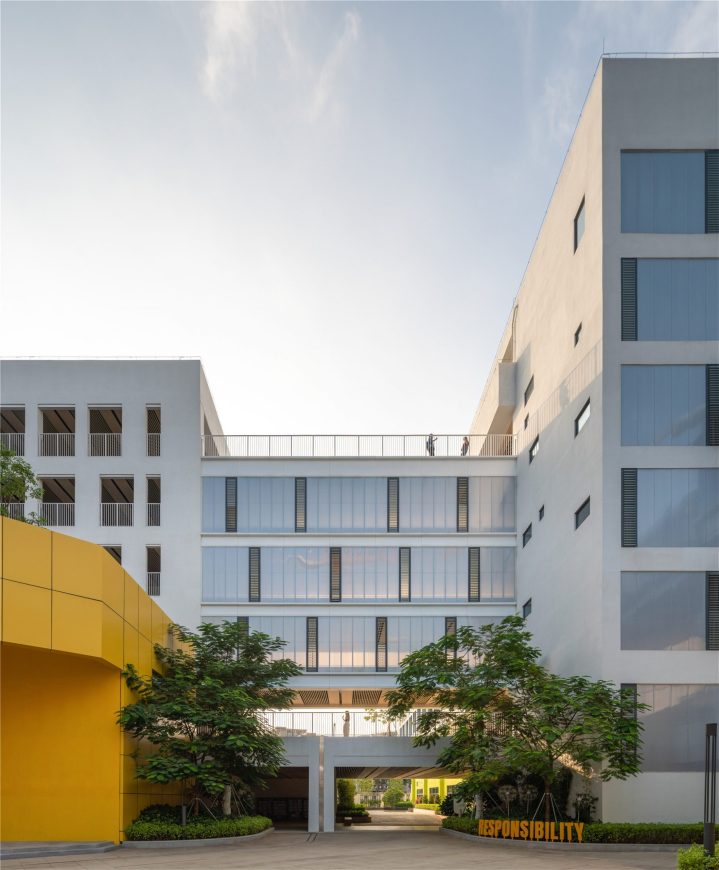



0 Comments